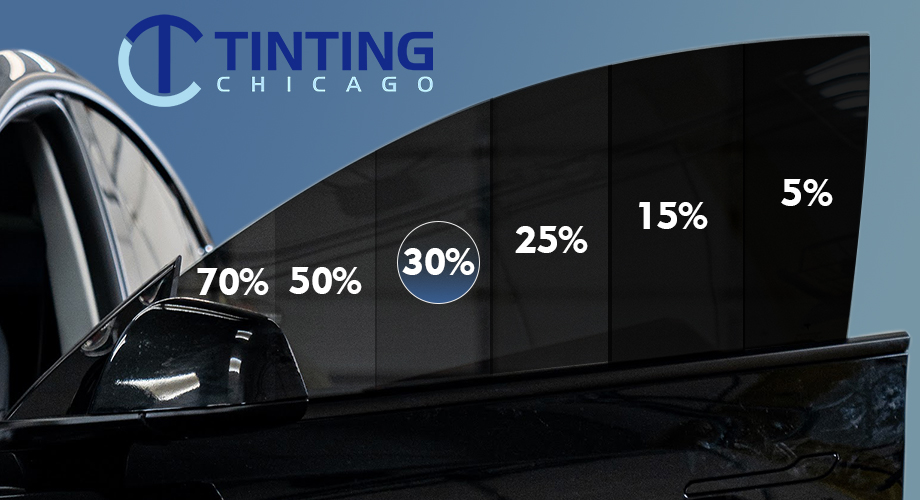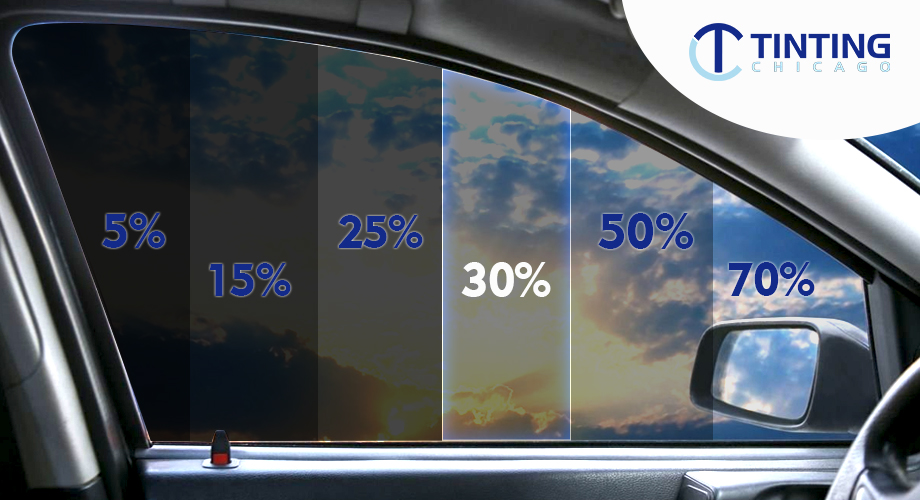


































































































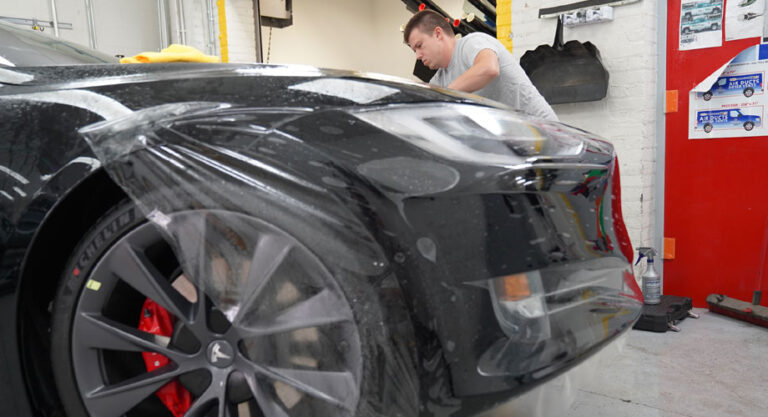
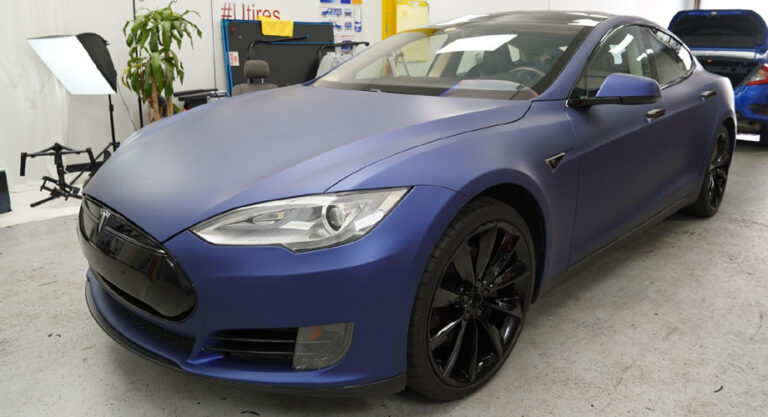

















































































































Car owners can use different percentages of tint, but there are certain restrictions in different states. However, 30% tint on windows is considered the gold standard and usually meets the legal requirements in most states.

Types of Films for 30% Window Tints and Their Manufacturers
Four types of films are the most common:
- Carbon film. It has a greater effect on blocking UV rays and heat, gives the car a luxurious look, does not contain metal, so it does not block mobile operator signals, Wi-Fi, or radio.
- Ceramic film. It is most often used in Tinting Chicago, as it reduces interior burnout and sun damage by 50%, does not interfere with signal transmission, and protects against 99% UV rays.
- Dyed film. A cheap and less functional option blocks sunlight (visibility is lower).
- Metalized car window tint. It has a disadvantage: it almost does not transmit cellular, Wi-Fi, and GPS signals.
Tinting Chicago recommends using the first two types. Ceramic films, although more expensive, are of the highest quality. They have been researched and have become a technological breakthrough in the tinting market. Sometimes, it’s worth overpaying to get results that last for years!
The company does not use the latter two types of films because of their low functionality.
What Are the Main Manufacturers and Brands for Tinting?
Choosing the right manufacturer is essential to ensure that the tinting effect is optimal and performs the desired functions. There are many brands of films available:
– Suntek
– 3M
– LLumar
– XPEL
– RAYNO
Our shop mainly uses quality XPEL and RAYNO products for 30% tint on all windows.
Permissible Car Window Tint in the USA
Window tint laws can vary significantly from state to state. It is important to make sure that your vehicle complies with local regulations.
Generally, 30% tint on all windows is allowed in most USA states as of 2024:
- 30% tint on all windscreens: only the upper part of the windscreen (tint stripe) is allowed in most states, known as the “AS-1 line”. In Ohio, the maximum is 30%, and in Illinois, any tint is allowed, but no wider than 6 inches.
- 30% tint on front windows: can be tinted in most states, but California requires a minimum of 70% VLT and Arizona requires 30% VLT.
- 30% tint on rear windows: many states allow this percentage of tint. For example, New York has no restrictions, and Illinois uses a “golden mean” rule of 30%.
- 30% rear window tint – has no restrictions in most states.
For accurate and up-to-date compliance, it is important to check the requirements of a particular state, as they may vary.
Tinting for Different Body Types
Each state has its own laws on the percentage of tint allowed for different body types, such as:
In Illinois, where Tinting Chicago is located, the following rules apply:
– Windshield: no tint allowed, only a 6 inches wide strip on top of any VLT.
– Front side windows: 30% VTL or more.
– Back side windows: 30% VLT or more.
– Rear window: 30% VLT and more.
To avoid confusion with percentages and to make your stay in the car comfortable, we offer our customers a 30% window tint kit; the windscreen is not included.
our latest news!
For Which Car Brands Do We Choose 30% Tinting?
Usually, Tinting Chicago specialists tint all car brands, but most often, we are approached by drivers of the following cars: Toyota, Honda, BMW, Mercedes-Benz, Ford, Jeep, Audi, Lexus, Hyundai, KIA, Nissan.
Do not forget that some modern cars are sold already tinted from the factory. This is a small percentage of the tint allowed in most states. But if you decide to make it darker, this nuance is worth considering.
Where Else Is Tinting Used?
If you want to make your car stand out among others, you should use a service from Tinting Chicago, such as headlight tinting. Lightly tinted headlights in the color scheme of your car will look very stylish, and a professionally selected 30% film will increase heat resistance and protect the headlight glass from scratches.
Tinting is possible not only for car windows and headlights but it is often used for other buildings with windows:
- Residential buildings and apartments: tinting helps to reduce heat, maintain privacy, and protect furniture from fading. A 30% tint on house windows is often used to achieve a balance between sun protection and pleasant natural light.
- Commercial buildings and offices: tinting is used to reduce glare on monitor screens and control temperature.
- Storefronts: they can also use tinting to protect goods from the sun and reduce the cost of cooling the premises.
- Garden buildings and greenhouses: to regulate temperature and lighting so that plants are not damaged by sunlight.
Thus, 30% tinting is used not only for vehicles but also for real estate.
Advantages And Disadvantages of 30% Car Window Tinting
There’s more to 30% window tint than just looking good. First, it has many protective functions:
- blocking ultraviolet and infrared radiation;
- reducing interior heat thanks to 30% tint on side windows, contributing to a comfortable stay in the car, especially in summer;
- reducing glare, which improves visibility and increases driver safety while driving;
- increasing privacy, making it difficult for passers-by to see what is inside the car.
The disadvantages of 30% tint on windows include:
- a slight limitation of visibility at night, especially on unlit roads, although 30% tinting provides sufficiently high visibility;
- reduced visibility inside the car can complicate the work of emergency services, for example, in the event of an accident;
- the high cost of a high-quality coating can hit your wallet, but it will last for many years.
30% tinting is one of the most popular options, because in addition to numerous advantages, you don’t have to worry about the legality, because this tint is allowed in most states.
FAQ
Is 30% tint too dark?
No, it is not very dark. On the contrary, it provides comfortable driving in bright sunlight.
Can a person see anything inside a car with a 30% tint?
It is almost impossible to see what is inside the car. This preserves the privacy of being in the car.
Is 30% tint on windows suitable for driving at night?
This film does not interfere with driving in the dark. But you need to take into account the requirements of the respective state for tinting.



























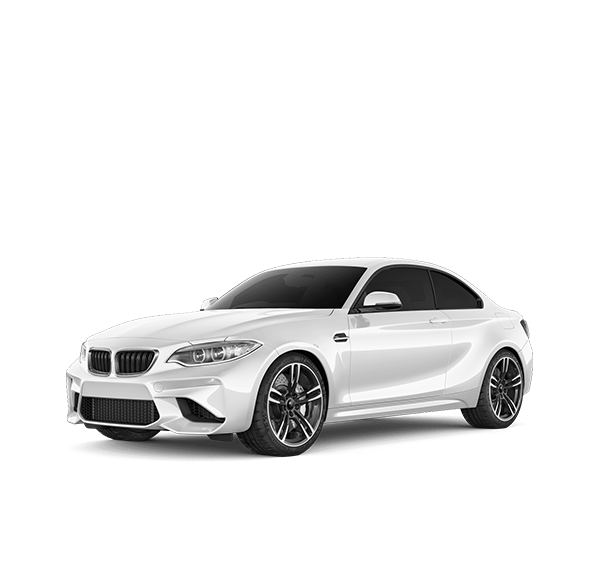
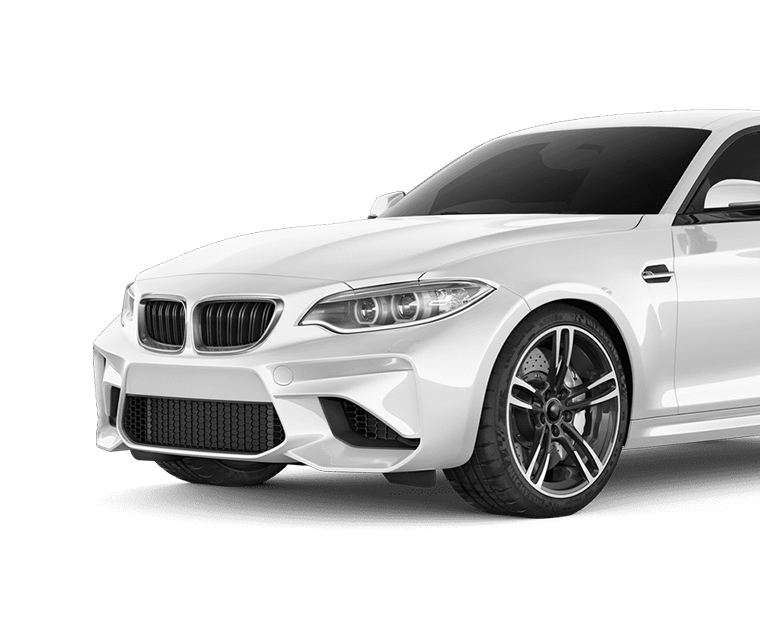
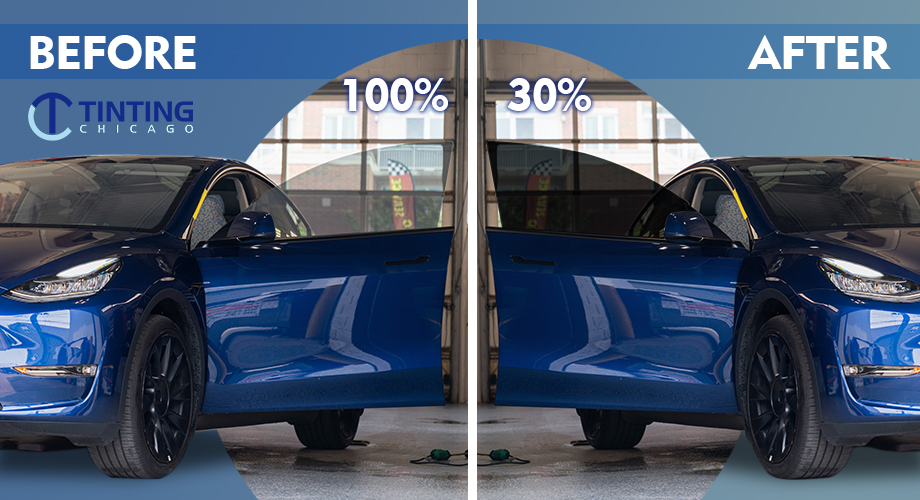
 Send a message
Send a message Send a message
Send a message